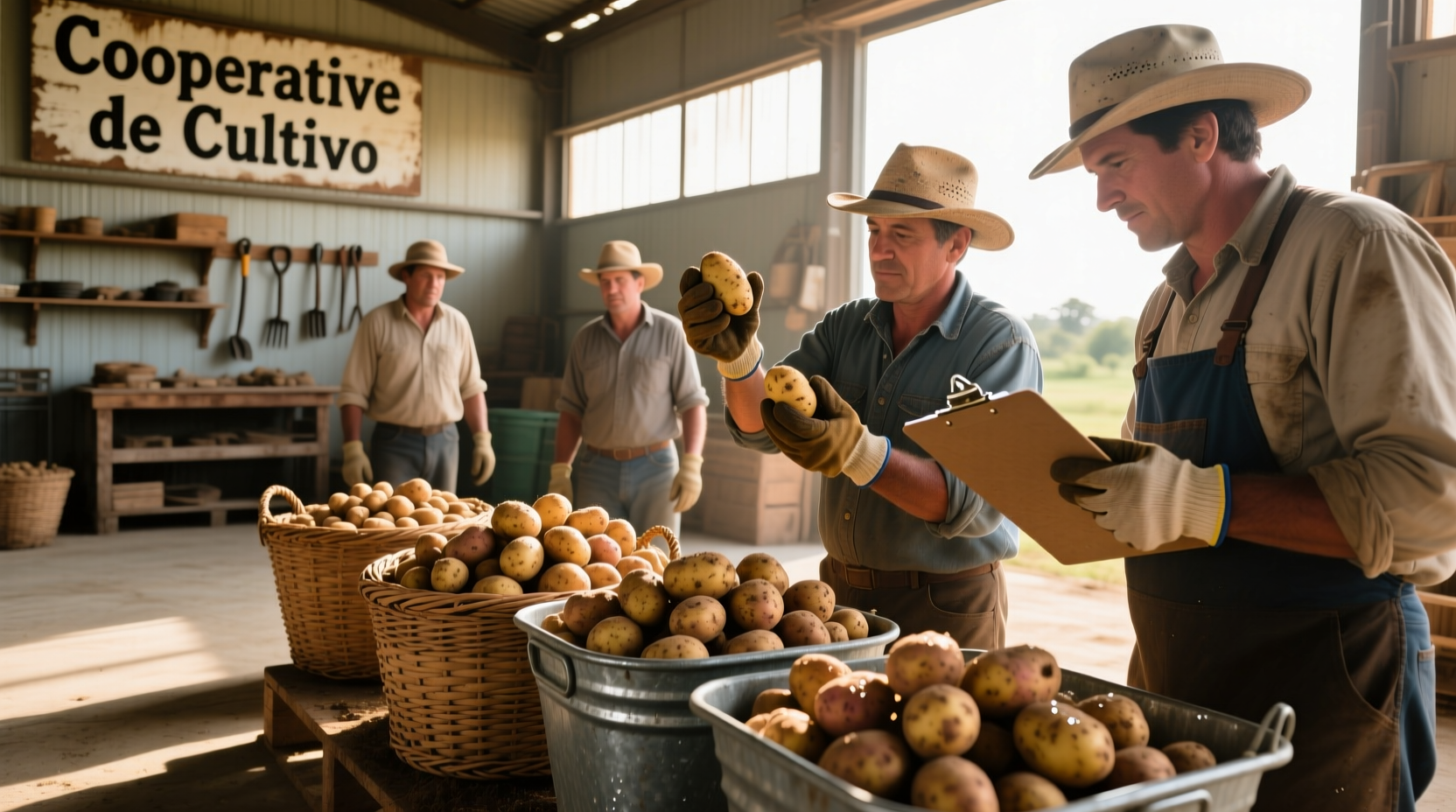For potato farmers seeking stability in volatile markets, cooperatives offer proven solutions that increase profitability while reducing individual risk. This guide explains how these agricultural partnerships function, their tangible benefits, and practical steps for participation—based on data from USDA agricultural economists and successful cooperative case studies across North America and Europe.
Understanding Potato Cooperative Fundamentals
Unlike conventional farming arrangements, potato cooperatives operate on democratic principles where each member has equal voting rights regardless of farm size. The USDA Agricultural Marketing Service reports that 35% of U.S. potato production moves through cooperative channels, demonstrating their significant role in the supply chain.
These organizations typically handle:
- Collective bargaining with processors and retailers
- Shared storage and transportation infrastructure
- Joint investment in quality control systems
- Negotiation of favorable input purchasing terms
- Market intelligence and demand forecasting
Key Benefits Driving Farmer Participation
Research from Michigan State University's Center for Regional Food Systems shows cooperative members achieve 12-18% higher net returns compared to independent growers. This advantage stems from several structural benefits:
| Benefit Category | Cooperative Advantage | Industry Average Impact |
|---|---|---|
| Market Access | Negotiate directly with major processors | 23% more stable contracts |
| Input Costs | Group purchasing of seed and fertilizer | 15-20% savings on inputs |
| Risk Management | Shared storage facilities reduce spoilage | 8-12% less post-harvest loss |
| Technical Support | Access to cooperative agronomists | 17% higher yield consistency |
Operational Structure of Successful Potato Cooperatives
Effective cooperatives follow established organizational patterns that balance democratic governance with operational efficiency. The International Cooperative Alliance identifies three critical structural components:
- Governance Model - Elected boards representing geographic regions ensure fair representation
- Service Tiers - Members choose service levels matching their production scale
- Profit Distribution - Patronage dividends based on volume handled through the cooperative
Unlike corporations, cooperatives return surplus revenue to members proportional to their business with the organization. This "user-ownership" principle creates powerful alignment between the cooperative's success and individual farmer outcomes.

Joining Process: Practical Steps for Growers
Prospective members should follow this verified pathway to cooperative participation:
Initial Assessment Phase
Conduct thorough due diligence by:
- Reviewing the cooperative's financial statements (required by USDA regulations)
- Attending member meetings as a guest
- Consulting with current members about their experience
- Verifying the cooperative's standing with state agricultural departments
Application and Integration
The formal process typically involves:
- Submitting production history and farm certification documents
- Paying a one-time membership fee (usually $500-$2,000)
- Signing a marketing agreement with specified volume commitments
- Completing orientation on quality standards and delivery protocols
Contextual Limitations and Considerations
While beneficial for many growers, cooperatives aren't universally appropriate. The Purdue University Agricultural Extension identifies these critical boundary conditions:
- Minimum scale requirement - Farms under 20 acres often struggle to cover membership costs
- Geographic constraints - Distance to collection points affects transportation economics
- Commodity specialization - Growers with diverse crops may find limited value
- Market alignment - Cooperatives focused on processing potatoes won't serve fresh market growers
Successful integration requires honest assessment of whether your operation aligns with the cooperative's primary market channels and quality requirements.
Evolution of Potato Cooperative Models
Cooperative structures have evolved significantly to meet changing market demands:
| Time Period | Primary Focus | Key Developments |
|---|---|---|
| 1930s-1950s | Basic marketing | Formation of regional marketing pools during agricultural depression |
| 1960s-1980s | Processing partnerships | Integration with frozen food manufacturers and french fry producers |
| 1990s-2000s | Quality standardization | Implementation of uniform grading and food safety protocols |
| 2010s-Present | Value-added diversification | Development of branded products and direct-to-consumer channels |
Modern cooperatives increasingly develop proprietary varieties and processing capabilities, moving beyond basic commodity handling to capture more value along the supply chain.
Real-World Success: The Pacific Northwest Example
The Washington Potato & Onion Committee reports that regional cooperatives have increased grower returns by 27% over the past decade through strategic investments in:
- Cold storage facilities with precise humidity control
- On-site processing for value-added products
- Joint research initiatives with land-grant universities
- Diversified market development (food service, retail, export)
"Our cooperative's investment in specialty potato varieties has opened premium markets that individual growers could never access," explains Mark Thompson, a third-generation potato farmer and cooperative board member in Idaho.
Getting Started: Your Action Plan
Follow these verified steps to explore cooperative opportunities:
- Identify potential cooperatives using the USDA's Cooperative Statistics database
- Compare service offerings against your specific production profile
- Attend informational sessions hosted by cooperative representatives
- Negotiate trial participation for one growing season before full commitment
Remember that successful cooperative relationships require active participation—not just passive membership. Regular attendance at meetings and engagement with quality initiatives significantly increases member satisfaction and returns.











 浙公网安备
33010002000092号
浙公网安备
33010002000092号 浙B2-20120091-4
浙B2-20120091-4